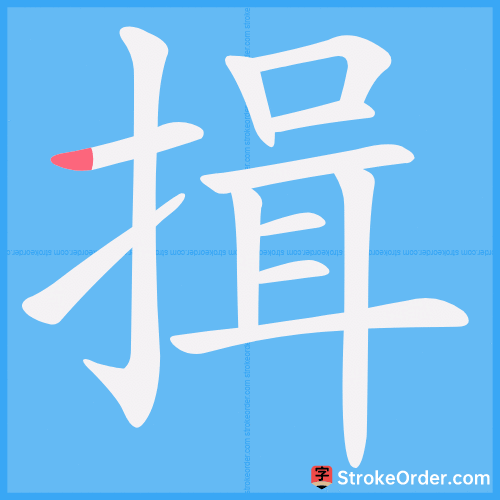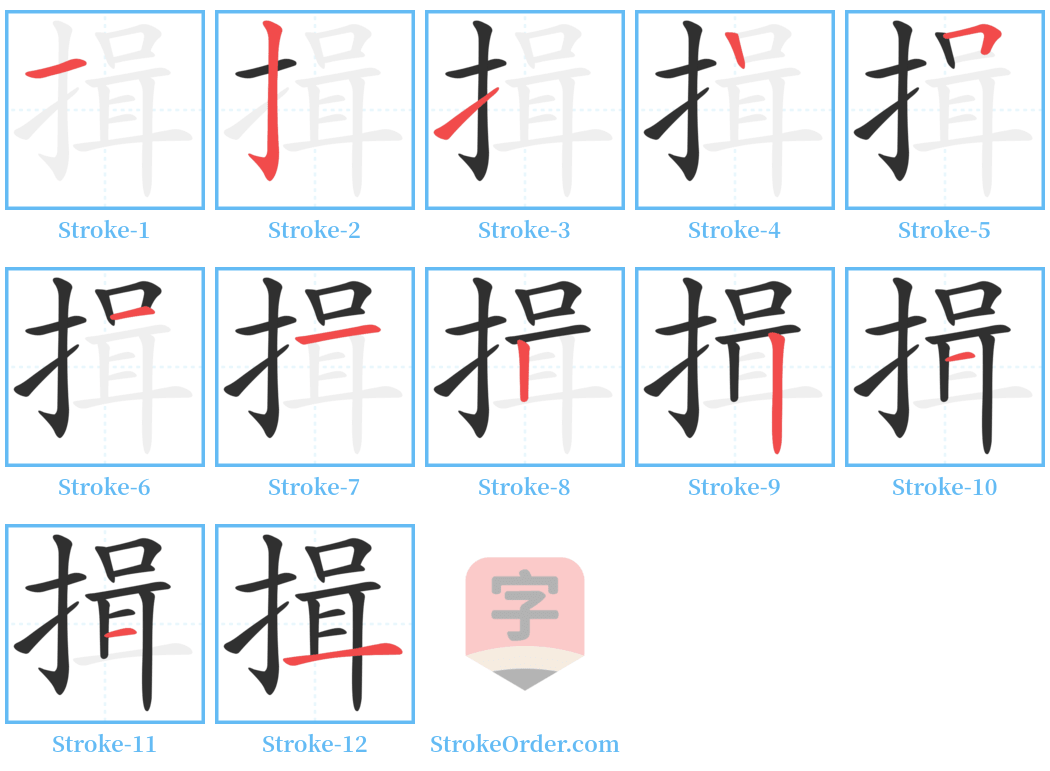揖 Stroke Order
Animated Stroke Order of 揖

Stroke Order Diagrams for 揖

Step-by-Step Handwriting Guide for 揖

Learn to Write Chinese Characters with Video Tutorials
Watch the video of writing the Chinese character "揖", learn the correct stroke order (笔顺) of the character "揖", and master the standard way of writing the character "揖".
Free Printable Handwriting Practice with Stroke Order: 揖
Printable Writing Practice Worksheet of "揖" in Portrait Orientation (Tian Zi Ge)

Printable Writing Practice Worksheet of "揖" in Landscape Orientation (Tian Zi Ge)

Information of 揖
Pinyin
yī
Radical
扌
Strokes
12 strokes
Usage
★★★★
Definition
greet (by raising the joined hands)
揖 [yī]
1. Ancient gesture of bowing with hands clasped.
1.1. This refers to the ancient bowing gesture: performed in salutation (作(zuō)~).
1.2. Salutation upon meeting the host and guests (~让)
1.3. Greeting a guest (~客).
1.4. Bidding farewell (~别).
2. Primary meaning: A bow made with hands clasped.
3. To give way, to yield (让出,逊主).
4. Equivalent to "壹" (yī). To be single-minded (专一).
引例:
1. “自家拜揖,愿求恩官高姓大名。” from "Water Margin". (I bow in my own home, hoping to seek favor from the esteemed officials.)
例子:
1. Greeting a guest (揖客; long bow for a guest; clasp hands in salutation towards the guest).
2. Salutation in ritual movements during ancient ceremonial occasions (揖游).
引例:
1. “公惟国家之统,揖大福大恩,事事谦让,动而固辞。” from "Book of Han". (The noble applies merely to the unification of the state, yielding great fortune and grace, humbly yielding in all matters.)
例子:
1. Bowing and yielding (揖让; etiquette for the guest and host meeting; relinquishing position to the capable).
2. Allowing a thief in (揖盗开门; metaphorically implies accepting wrongdoers and inviting disaster upon oneself).
5. Also means to concentrate or unify (聚合).
引例:
1. “普天之下,搏心揖志。” from "Records of the Historian". (Across the world, to strive with heart and will.)
Input Method for 揖
Pinyin
yi1
Wubi
rkbg
Cangjie
qrsj
Zhengma
djce
Four Corner
56041
Unicode
U+63d6
Same Pronunciation Characters